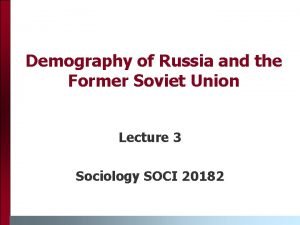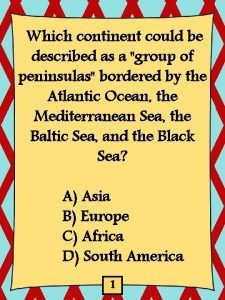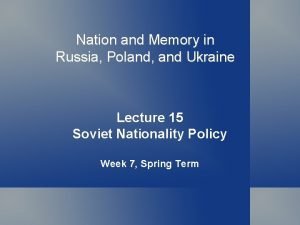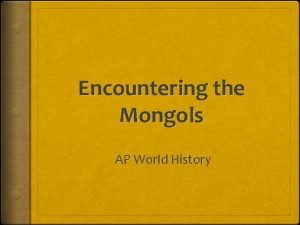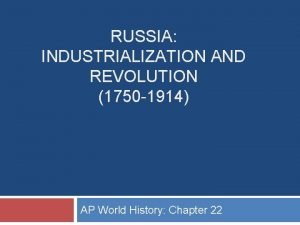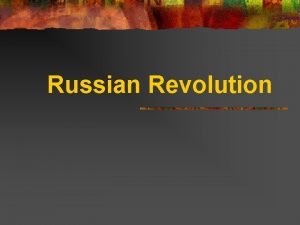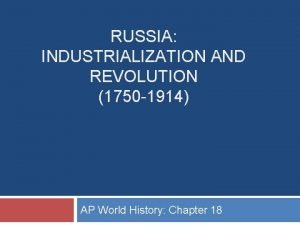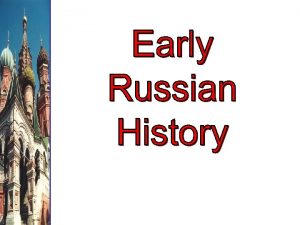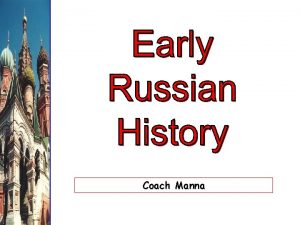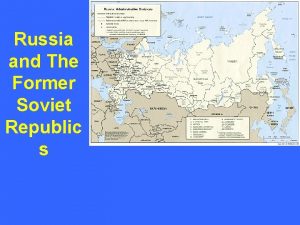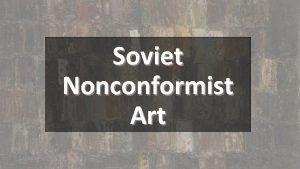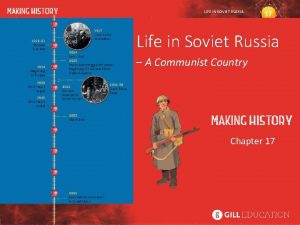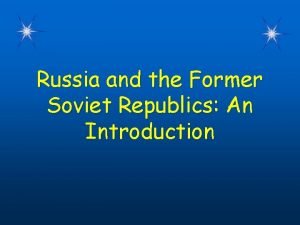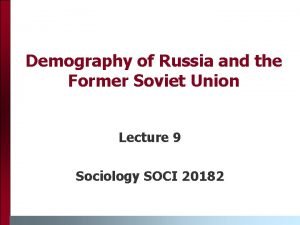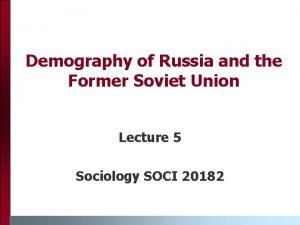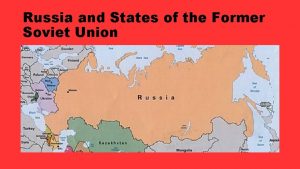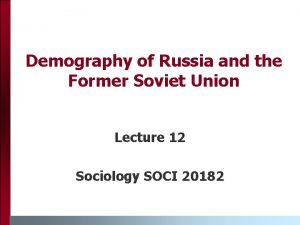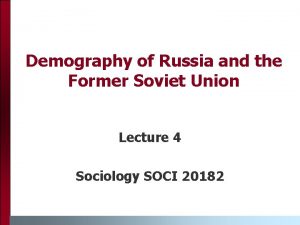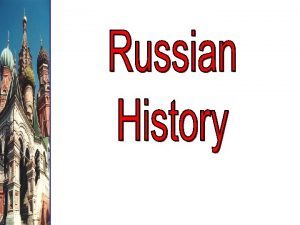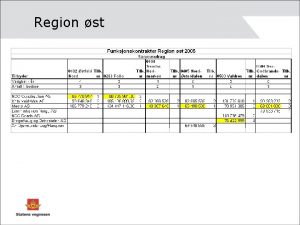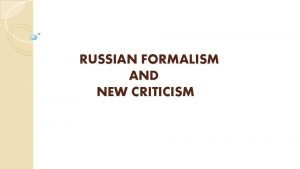Early Russian History Russia Today Former Soviet Region






















- Slides: 22

Early Russian History

Russia Today

Former Soviet Region Compared in Latitude & Area with the United States

Russia’s Time Zones

Topography of Russia

Rich Soil of the Steppes Chernozem Soil

Themes in Russian History • Expansion by conquest. – Need for warm-water ports. • The necessity of a strong, central government. §Siberia (“Permafrost”) §Average temperatures of January vary from 0 to -50°C, and in July from 1 to 25°C § 150, 000 population.

Early Russia

Early Byzantine Influences: • Orthodox Christianity • Cyrillic Alphabet

Russian Expansion

The Mongols Invade Russia

Russian Boyars • Boyars represented an aristocratic tier of society – powerful group with the privilege of advising the Tsar • Russian people said, “The tsar said it, the Boyars did it”. • These members of the nobility took up the highest military and civil posts – Formed a supreme council, the Duma • Besides the real aristocracy, a rich landowner could also be called a Boyar. – A modified form – barin was used by serfs to address their masters until the 19 th century.

Ivan the (III) Great (r. 14621505) • Tripled Russian territory • Ended control by Golden Horde • Renovated the Kremlin • Laid foundation for Russian State • One of longest-reigning Russian rulers

Ivan the Terrible (r. 1533 -1584) • Grand Prince (1533 -1547) • First “Tsar of all Russians” until 1584 • Transformed Russia from medieval state into an empire – Resisted Golden Horde – Gain Access to Baltic Sea – Reign of terror (1560 -1584) • Blamed Boyars for death of wife

Russia in the Late 1500 s

Romanov Dynasty • Feodor rules after death of Ivan IV – Russia spirals into Time of Troubles • Time between death of Feodor (1598) and rise of Romanov family (1613) – Famine brought on by cold weather • 1/3 of Russia’s population dies (~ 2 million) • Russia controlled by Polish-Lithuanian Commonwealth – Result of Polish-Muscovite War (1605 -1618)

Michael Romanov (r. 1613 -1645) Romanov Family Crest

The Pendulum of Russian History Pro-West For Progress & Change Encourage New Ideas, Technologies, etc. Anti-West Isolationist Xenophobic Ultra-Conservative § A few Tsars § Most Tsars § Intellectual elites § Russian Orthodox Church § Merchants/businessmen § Young members of the middle class. § Military § Boyars § peasants REFORM-MINDED LEADER DEMAGOGUE

Peter the Great(ish)

Peter the Great (r. 1682 -1725) • Best known for his extensive reforms in an attempt to establish Russia as a great nation – Created a strong navy – Reorganized army according to Western standards – Secularized schools – Administered greater control over Orthodox Church – Introduced new administrative and territorial divisions of the country.

Peter the Great • • Focused on science and technology Developed commerce and industry Created a viable Senate Won territory through war • BUT – Known to be cruel, tyrannical – Continuously raised taxes – Violent tendencies, heavy drinker

Russia & Sweden After the Great Northern War
 Population pyramid russia
Population pyramid russia Meanwhile in soviet russia
Meanwhile in soviet russia The geographic feature most responsible for extensive trade
The geographic feature most responsible for extensive trade There lived such a man in russia long ago
There lived such a man in russia long ago For today's meeting
For today's meeting In todays lesson
In todays lesson Today meeting or today's meeting
Today meeting or today's meeting Today lesson or today's lesson
Today lesson or today's lesson Today's lesson or today lesson
Today's lesson or today lesson Example of repitition
Example of repitition Ukraine history with russia
Ukraine history with russia Mongols in russia ap world history
Mongols in russia ap world history Industrialization definition ap world history
Industrialization definition ap world history Http://www.history.com/topics/russian-revolution
Http://www.history.com/topics/russian-revolution Russian revolution of 1905 definition ap world history
Russian revolution of 1905 definition ap world history Russian language alphabet
Russian language alphabet Eras of russian history
Eras of russian history Early cpr and early defibrillation can: *
Early cpr and early defibrillation can: * Rhomboideus minor
Rhomboideus minor Ece
Ece Lesson 2 the history of american banking and banking today
Lesson 2 the history of american banking and banking today Missy diwater the former platform diver
Missy diwater the former platform diver Mette pless motivation
Mette pless motivation
